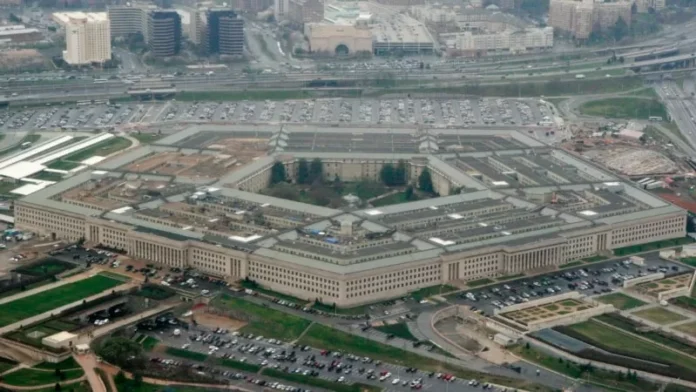In a move to better prepare for future conflicts and adapt to changing global threats, the U.S. Army has announced plans to cut its force by 24,000 soldiers, or about 5%. This decision, made by Army Secretary Christine Wormuth and Army Chief Gen. Randy George, aims to restructure the Army to be better equipped to fight large-scale combat operations.
The Army’s decision to reduce its force will mainly come from already-empty posts, rather than laying off actual soldiers. This includes downsizing in areas that were previously focused on counterinsurgency missions, which have become less relevant in today’s world. About 3,000 cuts will also come from Army special operations forces.
However, this restructuring plan will also add about 7,500 troops to other critical missions such as air-defense and counter-drone units. In addition, five new task forces will be created around the world with enhanced cyber, intelligence, and long-range strike capabilities. This shows the Army’s commitment to adapting to modern warfare and staying ahead of potential adversaries.
According to Army Secretary Wormuth, this decision was made after carefully evaluating the Army’s current force structure and identifying areas where there were excess or unnecessary positions. “We’re moving away from counterterrorism and counterinsurgency. We want to be postured for large-scale combat operations,” Wormuth stated during a press conference. General Randy George also added that the Army did extensive analysis to determine which areas to trim, with a focus on ensuring the Army has the right capabilities for future conflicts.
The Army’s decision to downsize is also a reflection of the recruiting challenges it has been facing in recent years. Despite the Army having the capacity for up to 494,000 soldiers, the current number of active-duty soldiers is only around 445,000. This is due to the Army’s inability to fill thousands of vacant positions in recent years. Under the new plan, the Army aims to reach a level of 470,000 active-duty soldiers over the next five years.
This move comes after two decades of war in Iraq and Afghanistan, where the Army had to quickly expand its forces to meet the demands of the battlefield. This included a significant focus on counterinsurgency missions to combat terrorist groups like al-Qaeda, the Taliban, and the Islamic State. However, as the global landscape has shifted, so has the focus of the military. The Army is now preparing for great power competition from countries like China and Russia, as well as threats from Iran and North Korea. The recent conflict in Ukraine has also highlighted the importance of having advanced air-defense systems and the capability to counter airborne and sea-based drones.
The Army’s decision to cut its force is also part of its broader efforts to modernize the military. This includes the procurement of new high-tech weapons and equipment, as well as a focus on recruiting and retaining highly skilled soldiers. As part of this effort, the Army will be cutting about 10,000 positions in engineering and similar fields that were previously tied to counterinsurgency missions. An additional 2,700 cuts will come from units that do not deploy often and can be downsized, and 6,500 will come from various training and administrative positions.
In addition, about 10,000 posts will be cut from cavalry squadrons, Stryker brigade combat teams, infantry brigade combat teams, and security force assistance brigades. These changes signify a significant shift for the Army, as it prepares for larger and more sophisticated enemies. However, it also highlights the recruiting challenges faced by all military services in recent years.
In the last fiscal year, the Army, Navy, and Air Force all failed to meet their recruitment goals, while the Marine Corps and Space Force met their targets. The Army only managed to bring in around 50,000 new recruits, falling short of its publicly stated goal of 65,000. This recruitment shortfall has prompted the Army to launch an overhaul of its recruiting process, focusing on targeting young individuals who have completed college or are early in their careers. Additionally, the Army is also creating a new professional force of recruiters, rather than relying on soldiers randomly assigned to the task.
In a statement last fall, Army Secretary Wormuth acknowledged the challenges the Army has faced in recruitment in recent years. She stated that the Army has not met its annual goal for new enlistment contracts since 2014. With this restructuring plan, the Army is taking steps to not only prepare for future

